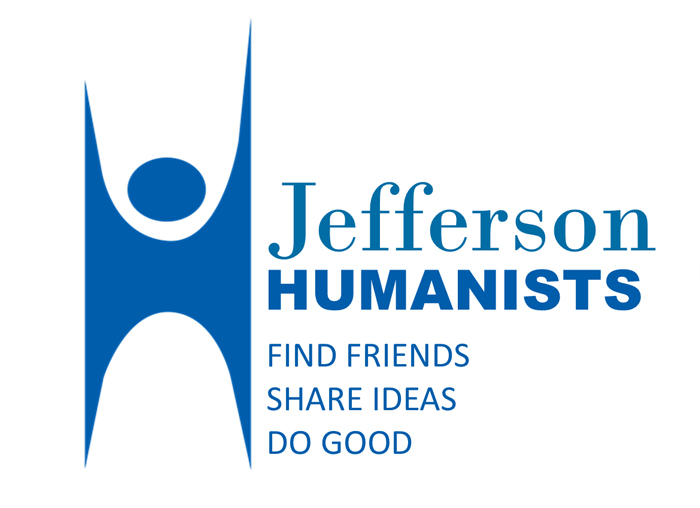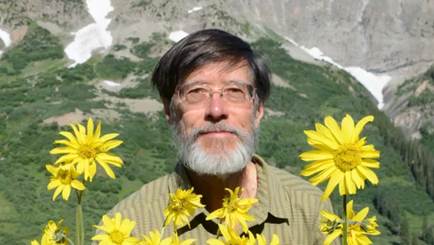JH Monthly Meeting – Writing Fiction in a Credulous World, James Van Pelt – Sept. 22, 2019

When: Sunday, September 22, 2019, 4:00 PM to 6:00 PM
Where: Jefferson Unitarian Church, 14350 W 32nd Ave · Golden. How to find us. From I-70 in Wheat Ridge, take the Youngfield/32nd Ave Exit and goabout a mile west on 32nd just past the roundabout, on the left in east Golden.
We will serve appetizers from 4:00 to 4:30, then start the program. A small donation is suggested for the food and wine. The program will include announcements and a Humanist Moment before the presentation begins.
We hope to see you at 4:00 pm, on Sunday, September 22nd, at Jefferson Unitarian Church!
RSVP at https://www.meetup.com/JeffcoHumanists/events/263214508/
“Writing fiction feels like an adventurous act, nudging aside reality a word at a time.”
― James Van Pelt
Click on link to print article: Van Pelt article, REV 9 9 19
Click on link to print flyer: Writing Fiction in a Credulous World flyer REV 9 12 19
SEPTEMBER CHAPTER PROGRAM
“Writing Fiction in a Credulous World” by James Van Pelt, Award winning Colorado Science Fiction Author. ” Van Pelt will speak about where his stories of the future come from, why there is an urge to tell them, and why there is such a ready audience to receive them. Van Pelt comments: “Fiction doesn’t work on someone who isn’t willing to suspend disbelief at least for the moment of the story.”
James Van Pelt is a full-time writer in western Colorado. His work has appeared in many science fiction and fantasy magazines and anthologies. He’s been a finalist for a Nebula Award and been reprinted in many year’s best collections. His first Young Adult novel, Pandora’s Gun, was released from Fairwood Press in August of 2015. His latest collection, The Experience Arcade and Other Stories was released at the World Fantasy Convention in 2017. James blogs at http://www.jamesvanpelt.com, and he can be found on Facebook (https://www.facebook.com/james.vanpelt.14)
James was a high school English and literature teacher in Western Colorado for many years while he was developing his writing career. He started publishing fiction in 1990, with numerous appearances in most of the major science fiction and fantasy magazines including Talebones, Realms of Fantasy, Alfred Hitchcock’s Mystery Magazine, Analog, and Isaac Asimov’s Science Fiction. His first collection of stories, Strangers and Beggars, was released in 2002 and he has been writing short stories and two novels ever since. He has been a finalist for the Nebula science fiction award, the Colorado Blue Spruce Young Adult Award, and recognized as a Best Book for Young Adults for the American Library Association.
I first heard him many years ago at a Young Adult Literature conference. He spoke about his writing and captivated the young audience… and me. I bought my first two of his books then.
I sent James an article about science fiction that basically said that all science fiction is basically a projection of the current human condition. James sent the following thoughtful response”
When I teach science fiction in the high school, I tell the kids that science fiction, like all literature, really reflects the anxieties and fascinations of the time that produced them. They are less about predicting the future than they are about reacting to the present. A good example of this is H.G. Well’s THE TIME MACHINE. In the 1890s, when he wrote it, one of the fears was the impact of runaway capitalism and the industrial revolution turning everyone except the rich into factory workers. So in his story, the future his character travels to, 800,000 years away, shows a humanity that split by evolution into two species: the Eloi, who were the weak descendants of the rich, who because they had all their needs met and did not need to work had become almost childlike, weak creatures. The Morlocks, on the other hand, the descendants of the factory workers, had become hard, beast-like animals who now (ironically) raised the Eloi as cattle and ate them. Wells was responding to the fears of his time. He wasn’t predicting so much as creating a metaphor that captured the zeitgeist.
The 1960, George Pal movie of THE TIME MACHINE, was an American retelling of Wells’ story. By this time, unions and the government had reigned in run-away capitalism, so people weren’t thinking about the economy in the terms as they had in the 1890s. They were, however, very concerned about nuclear war. So, the movie recreates the split of humanity into the weak Eloi and the beast Morlocks, except this time the Eloi were the descendants of the people who stayed on the surface when the nuclear war started, and the Morlocks were the ones who fled into the bomb shelters. The rest of the plot plays out pretty much the same way and the Morlocks raise the Eloi as cattle.
In 2002 the story is made again with Guy Pierce as the time traveler. Oddly enough, by 2002, most people were not concerned in the same way about an imminent nuclear war (I’m a child of the 60s—I still worry about nuclear war!). In 2002 there was more concern about the environment and out-of-control industrial development. In this version, a company is developing the ultimate retirement community on the moon, and, as unlikely as it sounds, manages to blow the moon apart while trying to make big enough caverns to house their future clients. Once again, this time under the devastating rain of moon fragments pummeling the Earth, humanity splits into the Eloi who remained on the surface and the Morlocks who went underground. The cannibal theme reappears once again.
Certainly when I write about the future, I sometimes write about what I fear (lately I’ve been writing stories about dealing with old age in the future). I don’t think I’m predicting, really, except in the broadest sense when I project my hopes into optimistic futures and my anxieties into pessimistic ones.
Oddly enough, one of my stories, “The Infodict,” was reprinted in an anthology of short stories that successfully predicted the future. In that story, which was published in 2001, I fairly accurately described Google Glasses and a world where all data, including personal data, is available for everyone. We’re not quite there yet, but my story is looking more and more possible.
I’ve now read most of what Van Pelt has written. I like his stories about education, where the heroes are the teachers and the villain’s educational bureaucracy. He makes me remember some of my favorite teachers. He also has a series of stories on traveling in space. In all of them, the travelers are escaping an earth devasted by disease or environmental disaster. What adventures happen when you travel for 4000 years into space? My favorites? A young werewolf finding the love of his life. A teacher seeing ghosts and saving the life of a student. An unhappy wife walking into the future through a painting with the neighbor across the street. The ghost dancing in a Fred Astaire movie. The ice cream vendor saving the lives of people mutated from environmental poisoning.
Here are a list of his books:
- Flying in the Heart of the Lafayette Escadrille and other stories, collection of short stories
- The Last of the O-Forms and Other Stories, collection of short stories
- Strangers and Beggars stories, collection of short stories
- The Radio Magician and other stories, a collection of short stories
- The Summer of the Apocalypse, a novel
- Pandora’s Gun¸ a young adult novel
They are available cheaply on Amazon.
SOCK DRIVE
Humanists Helping Humanity, the social responsibility group of the Jefferson Humanists, is collecting socks for The Action Center, who is trying to break a Guinness World Record for the most socks ever collected. Please help them reach this goal by bringing your donation of new socks to the Monthly Chapter Meeting on September 22nd. Socks will be donated to the homeless and low-income families.
We’re also happy to continue collecting any personal hygiene items for donation to The Action Center as well.
——————————————————





